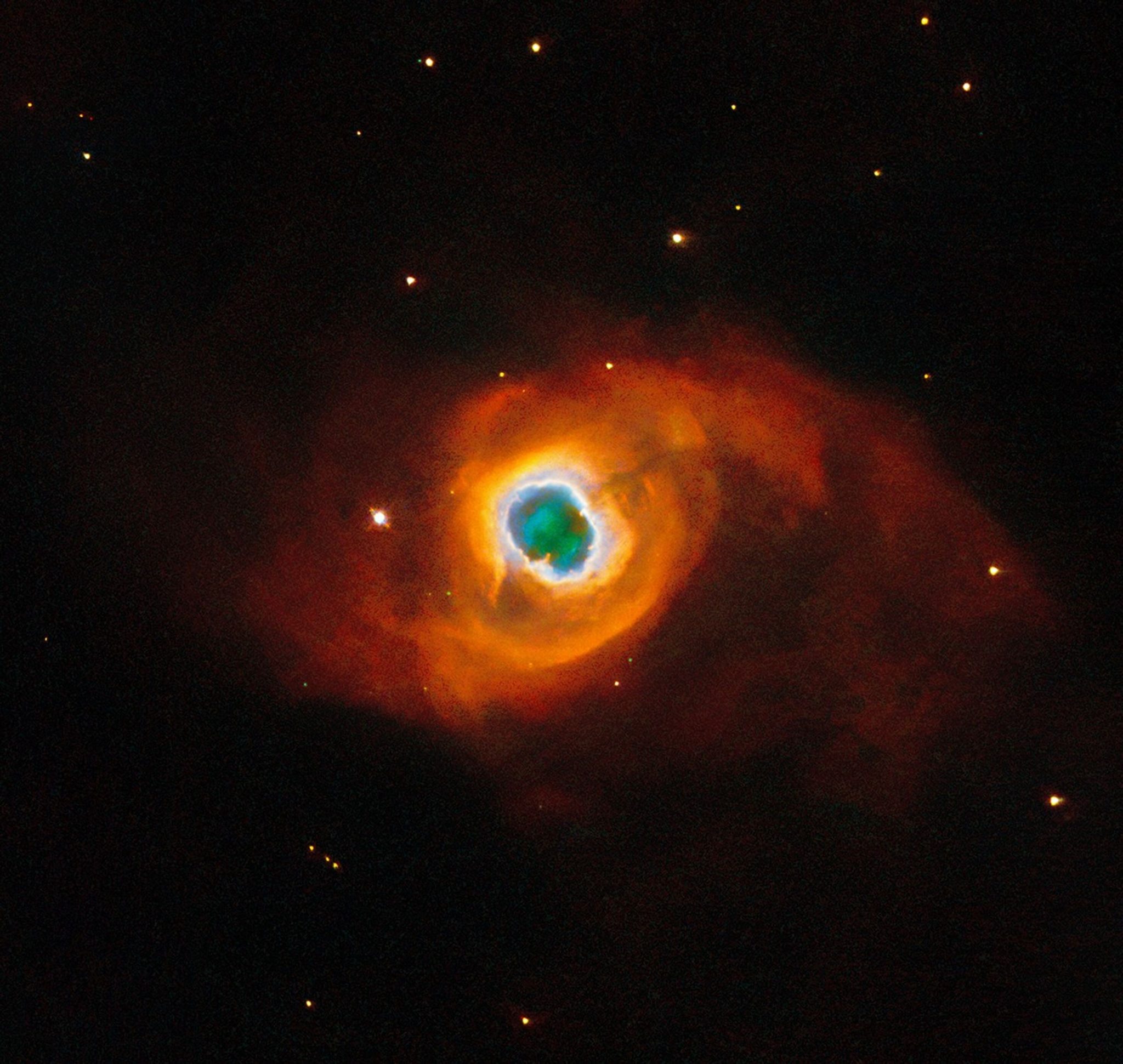When stars die, they create spectacular cosmic masterpieces. A new image from the Hubble telescope shows the planetary nebula Kohoutek 4-55, the bright result of the agony of a star that was once similar to the Sun.

Why is the nebula “planetary”?
The naming of this phenomenon is a historical mistake. In the 18th century, astronomers who saw round outlines through faint telescopes assumed they were new planets. In fact, such nebulae are actually an expanding gas shell ejected by a star that glows under the influence of ultraviolet radiation from the hot remnant of the luminary, a white dwarf.
“Planetary nebulae are the final fireworks of a star that turns its death into art,” NASA emphasizes. Kohoutek 4-55 is a reminder that even in the finale of life, stars leave a mark on the Universe.
Farewell Masterpiece
Kohoutek 4-55, located 4,600 light-years from Earth, is striking with concentric rings — evidence of several stages of the star’s “death convulsions.” This structure will only exist for tens of thousands of years before the gas dissipates, leaving a lone white dwarf.
This image is a symbolic farewell to the WFPC2 camera, replaced in 2009 by Hubble. The data it collected before removal was processed using modern methods, recreating details unavailable 16 years ago.
Although WFPC2 is no longer in operation, its successor, WFPC3, continues to break new ground, proving: science can turn even “farewell shots” into milestones of progress.
We previously reported on how astronomers found the oldest planetary nebula.
According to nasa.gov


